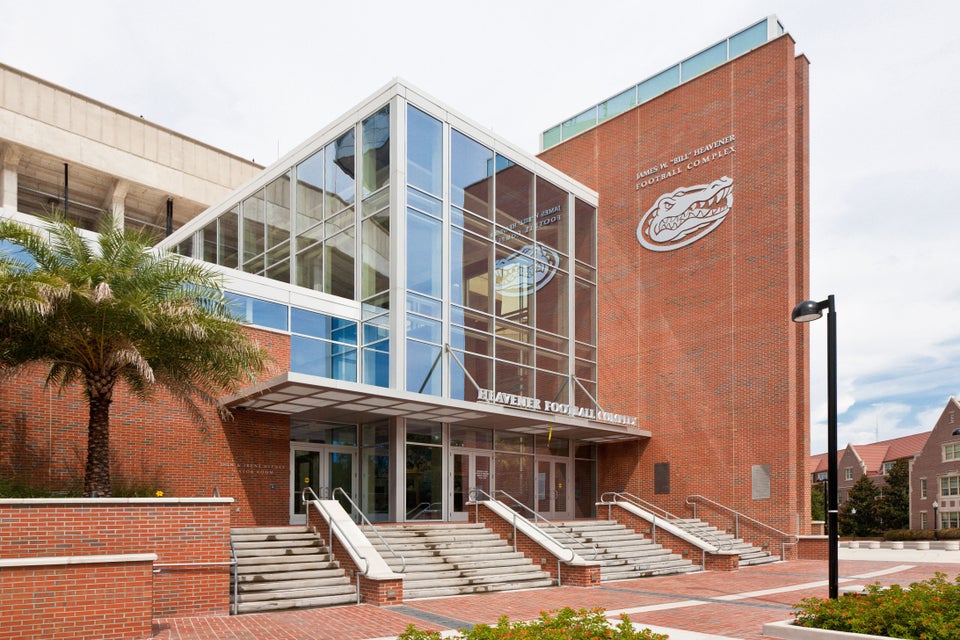Spring break of a high schooler's junior year marks the official starting gate of the college application season. Up until this point, your student may have toured a few colleges near home -- and rejected them all based on that fact -- but spring break of junior year is when thousands of families hit the road. Generally speaking, one region in the country is picked and armed with GPS, the TripAdvisor app and a spreadsheet of facts about each school, off you go. The goal is to get a feel for the school beyond the brochures that have been arriving daily for the past year. Here's what I learned on our recent trip:
1. Chevy Chase could have made a movie about this.
A road trip is a road trip is a road trip -- whether the goal is to see the Grand Canyon or eight colleges in five days. Someone in the car will lose their phone charger; someone else will misplace their earphones. No two people will need to use the bathroom at the rest area at the same time, including the dog. Different GPS apps in use simultaneously will scream out contradictory directions -- "turn left" from the back seat, "go right" from the co-pilot -- and at least one hotel will turn out to be the Bates Motel, despite the rave online reviews. You can also count on the "must-try" restaurant to be closed on the one night you are there.
You also will not be fully prepared for the weather. Dressing in layers is just a myth cooked up by those companies that sell travel clothes; if a real person tries it, they will look like a stuffed bear and be unable to move their arms in a meaningful fashion. Because you invariably will lack the proper clothing for this trip no matter where it is, you can also count on being hot, cold or wet, and while this is occurring, you will not be happy. Your student may very well reject what you thought was the perfect school for her based on the weather on the day of your visit.
The point: Keep your sense of humor. Make it fun. And later on, vote which of those Oregon tour guides who insisted that Miami gets more rain than Portland was the most convincing.
2. Many colleges look the same, but feel different.
We expected that big schools and small schools would look and feel different and they did. But there were differences within similarly sized colleges as well. Some were big differences -- a commuter school versus a residential college; a school with a large international student base versus one which draws students primarily from that state; a college closer to a big city versus closer to wilderness. After awhile, it all starts to blur together. Taking pictures as you go helps because, trust me, the dorms at Willamette look just like the dorms at Lewis & Clark -- or were those the dorms at the University of Puget Sound? Bed, Bath & Beyond clearly has cornered the market on dorm-room furnishings.
The goal of this trip is to identify the vibe of each school to determine if it's a good fit for your student. And so you look for the small signs. Another mom shared with me the reason her daughter picked the school that she did: She liked the shoes that the student tour guide was wearing. Taken at face value, it's random. But when you scratch below the surface, her daughter had found her like-minded community. (Yes, they were Birkenstocks.)
3. The 15-minute rule is a good idea.
This was my daughter's idea. My husband, her 14-year-old brother and I were instructed to say absolutely nothing about our impressions of the school for 15 minutes after the tour ended. No snide comments about how the school is in the middle of nowhere. No wondering aloud why so many students aren't smiling or whether the school's mere 40 percent four-year graduation rate has anything to do with it. No eye rolling when the admissions counselor -- and they all did this -- spent more time talking about the awesome opportunities of studying abroad without mentioning whether your semester in France is covered by your tuition and scholarships.
My daughter used these 15 minutes to jot down her impressions in a journal -- uninfluenced by us. She had devised five questions to answer about each school, including the all-important one: Can I see myself living here for four years?
Once we all spoke, I was shocked by how often we all had the same impression of a school.
4. Parental questions may be asked of the student tour guide, but keep them to a minimum.
While you may want to know if the dorm bathrooms are co-ed, your student may not care. Questions I heard from other parents included: How often and who cleans the rooms? Is there a quiet or substance-free dorm floor? And, how safe is the campus at night?
Questions I heard from students on tour were: What is there to do on weekends? Do freshmen have 8 a.m. classes? What if you get a roommate you hate? And, does the cafeteria serve food for vegans or those who are gluten-free?
5. Student tour guides are a mixed bag but you need to see beyond them.
Student tour guides have a script and for the most part, stick to it. They walk groups of families around the campus, pointing out various buildings and, in most cases, let you stand inside a dorm room for about 20 seconds. They point out where students eat, where students' classes will be, where students study. They tell you how great their professors are, how deeply they care about your success and how they will always be around to help you.
They shout "hello!" to various students walking by to show you how friendly the campus is. They tell you about various campus superstitions -- "don't step on that square" --and show you the fountain, the pond, the lake where friends will dunk you on your birthday.
Their job is to try and help your student envision what life at the school will be like. They use words like "awesome" and "amazing" a lot.
The one student tour guide we had who kept saying "youse guys" left me with a sour impression about the school's ability to educate. My daughter, on the other hand, admired her shoes.
6. You will see the same families over and over.
Right from the get-go, we began to see familiar faces from our tours later that evening in the hotel lobby or restaurant. We of course compared notes and impressions. Other parents became great sources of information too. Some had already toured colleges still on our list and we actually got the names of a few more schools to consider. Our students did their own comparisons too. My daughter pointed out that the gender ratio at one school was heavily more female, which may have scratched that college off her new friend's list.
7. You will hear the same stuff over and over too.
At pretty much every liberal arts college we heard how one-third of classes were general ed requirements, one-third of classes were taken in your major, and one-third of classes were electives. Then they would tell you about what fun electives you could pick. The spiels about studying abroad always took up a disproportionate amount of time to information about financial aid. No one volunteered how much debt on average a student graduates with. No one volunteered how much of need is met. No one volunteered what the school's four-year graduation rate is or what percentage of its graduates find a job in a year.
If you want answers to the hard questions, you need to ask. What's been your college tour experience? Let us know in comments.
Earlier on Huff/Post50:



